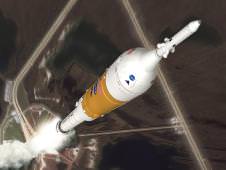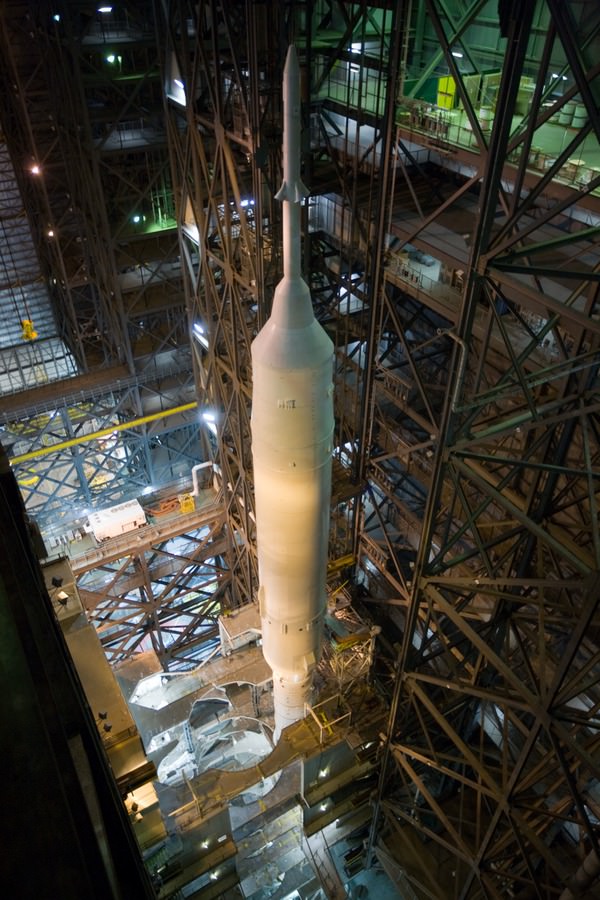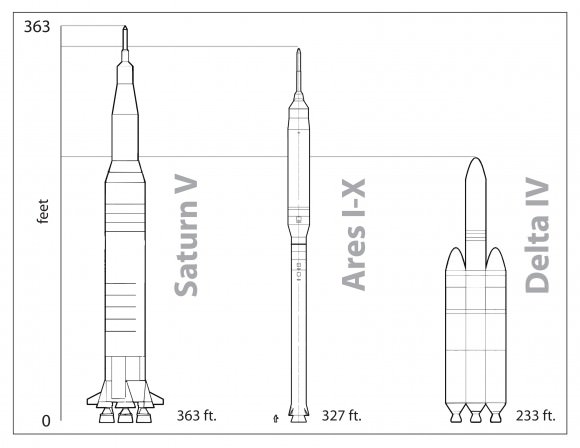[/caption]
Just one week after the first test flight test of the Ares I-X rocket, NASA says it may decide to cancel a follow-up launch called Ares 1-Y, which wasn’t scheduled until 2014. Reportedly, program managers recommended dropping the flight because, currently, there isn’t the funding to get an upper stage engine ready in time. The test flight may be replaced with a new, still undefined test flight in 2012 or 2013. “It simply does not fit where we are headed,” said Jeff Hanley, Constellation Program manager was quoted in NASA’s Constellation Blog. “The test vehicle was intended to meet evolving needs but the current configuration is too different from what the program requires to certify the Ares/Orion vehicle systems.”
Depending on whether the Obama administration decides to continue the Ares I program, this decision may be moot. Earlier this week Sen. Bill Nelson said Obama may make a decision on NASA’s future path, based on the report by the Augustine Commission, by the end of November.
At a press conference last week Hanley said the team continually assesses their flight test program. This week managers met and decided that the Ares I-Y flight fell too late in the vehicle development phase to provide useful information and lacks key elements to make it a true validation of the flight vehicle’s systems.
Originally, the I-Y test was planned for 2012. It was to be a suborbital flight to test a five-segment booster, a flight production upper stage, a functional command module and launch abort system and a simulated encapsulated service module, but without a J-2X engine.
By fall 2008, program managers were already looking at changing direction for the Ares I-Y test to improve the overall program’s chances of flying a full test vehicle by 2014. Now, with the Constellation Program nearing its preliminary design review and with maturing vehicles and systems, managers agree the I-Y test objectives can be achieved through other tests already in the manifest.
NASA is now studying the costs and benefits of going ahead with a 2012 launch previously called “Ares I-X prime” that would flight-test a full five-segment Ares I solid-fuel first stage and the Orion crew exploration vehicle launch abort system at high altitude.
Stay tuned.
Sources: NASA Constellation Blog, Aviation Week



